Our feet are the base upon which the rest of our body rests. For this reason, it it important to take good care of them, and to help them support us by allowing them to work in the best conditions possible. One of the ways to help our feet is by allowing them to have a good “posture”, or internal organisation.
The three arches
Our feet have to support us and give us stability on a variety of terrains, while also absorbing shocks when we walk, run or jump. For this reason they’re made of three arches that provide strong support like a tripod, and can also widen to absorb shocks. There arches are situated as follows:
- one between the heel and the “root” of the big toe;
- one between the heel and the “root” of the little toe;
- one between the “roots” of the big and little toes.

The first two provide a lot of stability, while the third one is very adaptable. These arches are sometimes very high or a bit low. If yours are not as optimal as you’d like, there are two things you can do. The first, and it is especially important if you actually suffer from this status, is to go see a podiatrist! The second, which can either complement the first (in a discussion with your podiatrist) or stand alone if your arches are globally fine but could be better, is to spend more time barefoot, after a gradual progression towards it if you’re used to wearing shoes all the time. A great way to get started is by reading Katy Bowman‘s wonderful book, Whole Body Barefoot. The reason for that is that the arches are maintained by muscles crossing the ankle, and they need to adjust their strength and tone to give you optimal arches. The ideal way to achieve that is by giving your feet natural input: barefoot walking on a variety of uneven, natural terrains.
Placement of the ankle
Now that we have our “tripod”, we have to use it effectively, and that means placing the load in a way that the tripod can use all three of its legs optimally. For many of us, that means trying to shift our ankle forward. Ideally, you want your outer malleolus to be at the vertical of a point on the floor roughly 1/5 to 1/4 of the way between your heel and the “root” of your little toe, so that the two first arches are properly used, with your weight being on top of your ankle when you stand (see last week’s post about posture).
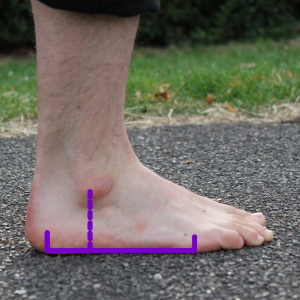
That is in fact the reason why if you tried last week’s postural guide, chances are you felt like you were falling backwards: if your ankles are too far back, your weight will just about stay on top of your heel. Additionally, the band formed by your plantar fascia and calf muscles is probably quite tight as it has to work extra hard to keep you upright if, like many, your pelvis is shifted forward and you’re wearing some kind of heel (even a few millimetres). This will also push your calcaneum (heel bone) forward, and pull your tibia and fibula (shin bones) backwards.
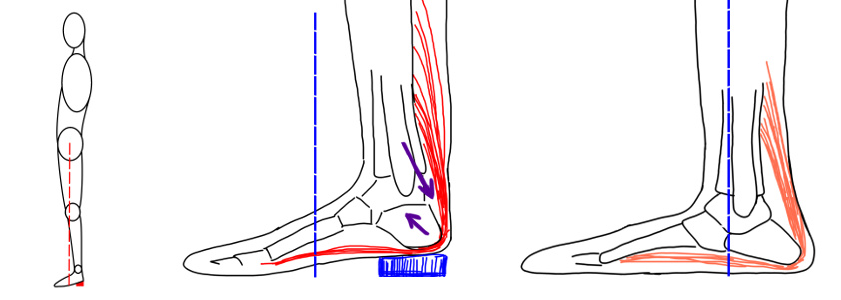
The vertical dotted line indicates where the centre of mass is.
To help bring your ankle back to a more stable, forwards position, you can work on you ankle mobility, and massage your feet regularly. This will ease your tissue into letting your calcaneum take its place, and let your foot support your body with more stability and adaptability.
If you want to know more about the arches in the foot, I highly recommend this video, which shows how they are embodied in our bones. The text is in French, but the images are pretty self-explanatory.
Continue reading: Imagery For Ankle Mobility, Standing Posture And Alignment, 5 Daily Opportunities To Perfect Your Posture.
Want more like this?
Check out the following blogs from massage therapists I know from around London:- On The Run Health and Fitness on running, nutrition and sports massage.
- The Soma Room on sports massage and exercise.
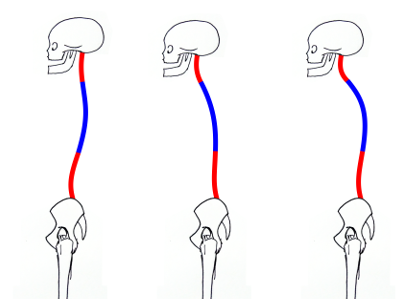
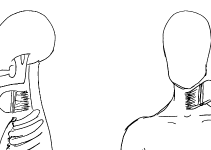
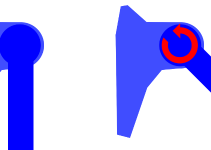
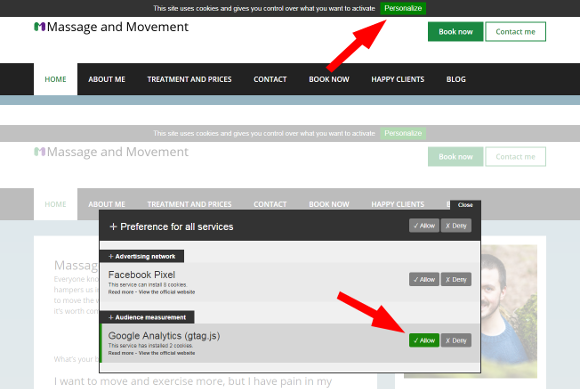
No Responses